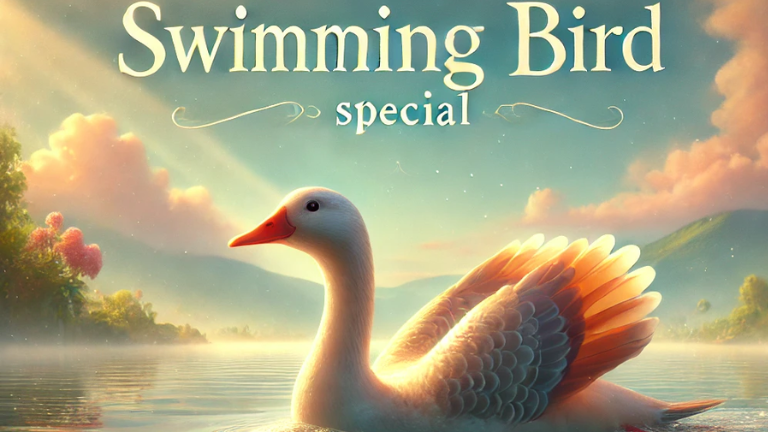Swimming birds, known for their elegance and capacity to explore water easily, have fascinated nature devotees and represented fortune in different societies from the beginning of time. The expression “lucky swimming bird” may appear to be uncommon, yet it alludes to a classification of birds that have wonderful variations, making them profoundly gifted in sea-going conditions. These birds flourish in water as well as are frequently viewed as images of karma, strength, and elegance. In this article, we will dig into the extraordinary qualities of these birds, investigate why they are thought of “lucky,” and talk about their importance in nature and culture.
What Makes a Bird a “Swimming Bird”?
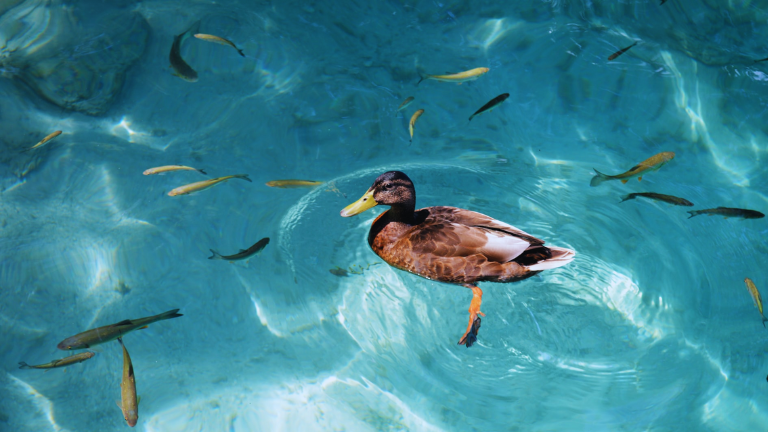
Swimming birds are species that have created exceptional transformations permitting them to live and move effectively in oceanic conditions. These birds have advanced highlights like webbed feet, specific plumes, and smoothed out bodies to work with their communication with water. The vast majority of these birds invest impressive energy in or around water, whether for hunting, settling, or relocation. Swimming birds can be found in different conditions going from freshwater lakes to saltwater seas, and their capacities make them specialists in exploring these watery domains.
Key Characteristics of Swimming Birds
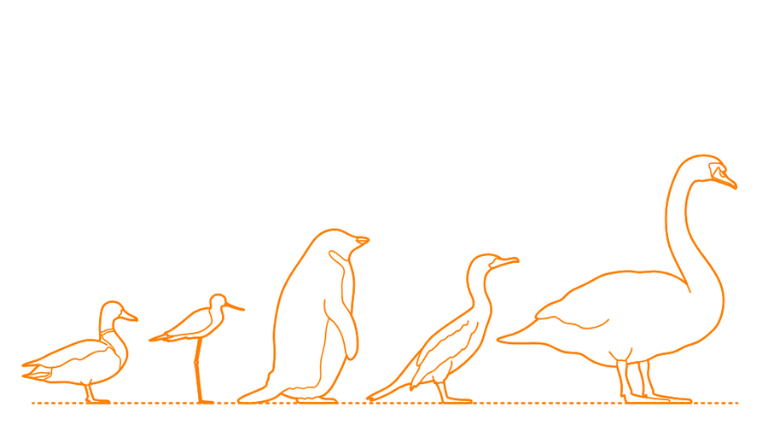
Swimming birds have a few particular qualities that empower them to flourish in sea-going conditions. These incorporate physical and social variations that assist them with moving, chase, and get by in water.
2.1 Webbed or Lobed Feet
One of the most characterizing elements of swimming birds is their feet. Numerous species, like ducks, swans, and geese, have webbed feet, which carry on like oars to assist them with moving effectively through the water. The webbing between the toes lessens obstruction, permitting them to easily skim. Different species, like grebes, have lobed toes, what capability along these lines however are more appropriate for plunging.
2.2 Waterproof Feathers
To remain light and keep up with body heat while swimming, numerous sea-going birds have waterproof plumes. These quills are covered with oils emitted from an organ close to the bird’s tail. This slick covering repulses water and keeps the plumes dry, permitting the birds to remain above water and swim easily. Without this transformation, their plumes would become waterlogged, and they would battle to remain over the water’s surface.
2.3 Streamlined Bodies
Swimming birds frequently have smoothed out, streamlined bodies that limit opposition as they travel through water. A smooth body shape assists them with skimming easily, preserving energy while swimming or plunging. For birds like penguins, their wing-like flippers additionally act as integral assets for submerged drive.
2.4 Specialized Feeding Mechanisms
Swimming birds have novel taking care of components custom-made to their amphibian way of life. A few birds, like pelicans, have enormous, adaptable bills with pockets to get fish. Others, similar to flamingos, have specific channel like bills that permit them to filter food from the water. The capacity to get to submerged food sources is a critical quality of swimming birds, empowering them to get by and flourish in oceanic territories.
Why Are Swimming Birds Considered Fortunate?
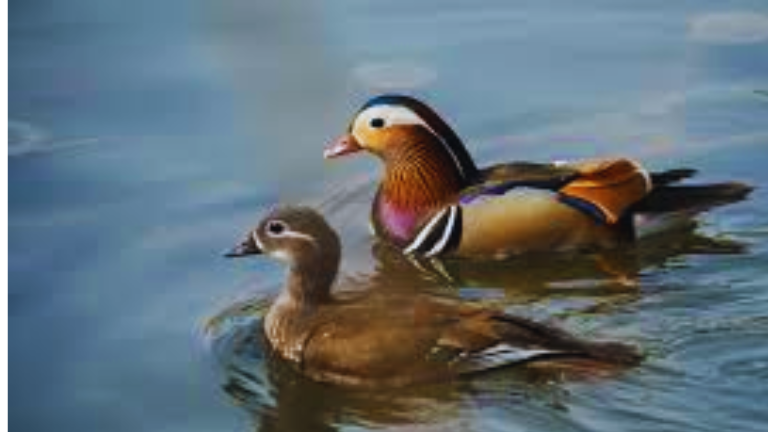
The expression “fortunate” when applied to swimming birds goes past their actual transformations. These birds are frequently viewed as images of karma, endurance, and effortlessness because of their uncommon capacity to flourish in different conditions. There are a few justifications for why swimming birds are viewed as lucky:
3.1 Access to Abundant Food Sources
Streams are rich with food, giving a different scope of fish, sea-going plants, and little spineless creatures. This overflow guarantees that swimming birds, like pelicans, ducks, and cormorants, have solid admittance to food sources. Dissimilar to earthbound birds that could battle to find food during brutal seasons, swimming birds frequently appreciate reliable admittance to sustenance, adding to their “lucky” status.
3.2 Adaptability Across Environments
Many swimming birds are exceptionally versatile and can make due in assorted conditions. They are talented swimmers as well as fit for blossoming with land and in the air. Birds like geese and swans are incredible migrators, traversing immense distances between various environments. Their capacity to acclimate to different conditions and conditions adds to their representative relationship with fortune.
3.3 Symbolism of Luck and Grace
In social and fanciful settings, swimming birds frequently address characteristics like beauty, versatility, and favorable luck. For instance, the expression “fortunate duck” is ordinarily used to depict somebody who encounters unforeseen best of luck. Swans, frequently seen floating exquisitely across a lake, represent love, immaculateness, and magnificence in many societies. These birds are every now and again portrayed as images of change and favorable luck in craftsmanship, writing, and fables.
Examples of Fortunate Swimming Birds
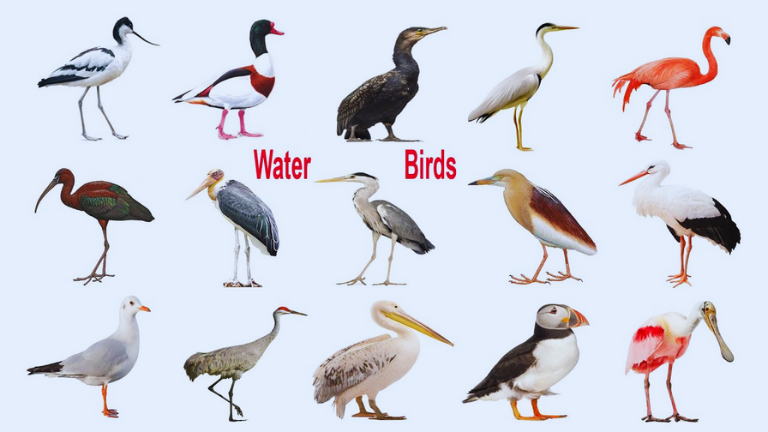
A few bird animal varieties are famous for their swimming skills and are viewed as images of fortune. We should investigate the absolute most striking models:
4.1 Ducks
Ducks are maybe the most recognizable swimming birds. Their webbed feet permit them to paddle effortlessly through freshwater conditions like lakes and lakes. Ducks are frequently connected with perkiness and favorable luck in many societies. As a matter of fact, the expression “fortunate duck” is usually used to portray somebody who is lucky or in a great circumstance.
4.2 Penguins
Penguins are flightless birds that are excellent swimmers. While they can’t fly in the air, they “fly” submerged utilizing their flippers. Penguins are adjusted to life in cool environments, with thick lard and waterproof plumes that assist them with getting by in frigid waters. Their strength and capacity to flourish in outrageous conditions make them an image of favorable luck and flexibility.
4.3 Swans
Swans are known for their magnificence and class. These birds coast easily across the water with long necks and agile developments. Swans are frequently connected with affection, virtue, and dedication, particularly in fables where they are viewed as images of change. Their elegant developments and tranquil disposition add to their standing as lucky animals.
4.4 Cormorants
Cormorants are master jumpers and can dive profound into the water to get fish. In certain societies, they have even been prepared by people to help with fishing, adding to their worth and emblematic relationship with fortune. Their expertise at plunging and their capacity to flourish in both new and saltwater conditions make them an eminent illustration of a “lucky swimming bird.”
4.5 Pelicans
Pelicans are notable for their huge, adaptable noses that permit them to gather up fish. These birds are many times seen hunting in gatherings, participating to proficiently get food. Their cleverness and versatility in hunting have procured them a spot as images of fortune in different societies.
The Ecological Role of Swimming Birds

Swimming birds are urgent to keeping up with the equilibrium of biological systems in amphibian conditions. Their taking care of propensities, transitory examples, and job in the pecking order add to the soundness of their territories.
5.1 Controlling Fish Populations
Birds like cormorants and pelicans assist with managing fish populaces by benefiting from them. This regular hunter prey relationship guarantees that no single species overwhelms the biological system, keeping up with biodiversity.
5.2 Seed Dispersal
A few swimming birds consume oceanic plants and assist with scattering seeds across various regions. This advances plant development and biodiversity in water biological systems.
5.3 Environmental Indicators
The soundness of swimming bird populaces can go about as a mark of the general strength of sea-going biological systems. A decrease in swimming bird numbers might flag ecological issues, for example, contamination or natural surroundings obliteration, which can affect the whole environment.
Cultural and Symbolic Significance

Over the entire course of time, swimming birds have been highlighted in different fantasies, stories, and customs, where they are frequently viewed as images of change, opportunity, and favorable luck.
6.1 Folklore and Mythology
In many societies, swans are seen as images of change and excellence, frequently showing up in fantasies as mysterious animals. Ducks and geese are likewise viewed as carriers of karma, with the conviction that experiencing a swimming bird can prompt positive results.
6.2 Literary and Artistic Representations
Swimming birds show up in various works of writing and craftsmanship. In certain accounts, they represent the ideals of elegance, opportunity, and flexibility. They are frequently utilized as representations for defeating snags and embracing change.
Also Check: how to work
FAQs
What are fortunate swimming birds?
Lucky swimming birds allude to species that are extraordinary swimmers and are frequently seen as images of favorable luck, beauty, and strength. These birds, like ducks, swans, penguins, and pelicans, have special transformations like webbed feet, waterproof quills, and smoothed out bodies that permit them to flourish in oceanic conditions.
Why are swimming birds considered lucky?
Swimming birds are considered fortunate in light of their capacity to get to bountiful food sources in water, their flexibility to assorted conditions, and their emblematic relationship with elegance and excellence. Many societies view these birds as images of favorable luck, with species like ducks and swans much of the time showing up in fables and folklore as bearers of karma.
What are some examples of fortunate swimming birds?
Some notable examples of fortunate swimming birds include:
- Ducks: Known for their playful nature and symbolic association with luck.
- Penguins: Resilient and highly adapted to cold environments, symbolizing survival.
- Swans: Graceful birds that represent love, purity, and transformation.
- Cormorants: Expert divers that help maintain balance in aquatic ecosystems.
- Pelicans: Resourceful hunters often seen as symbols of adaptability and fortune.
Conclusion
Swimming birds are not simply entrancing animals — they address nature’s creativity and the significance of flexibility and elegance in endurance. From ducks and swans to penguins and pelicans, these birds have advanced to flourish in amphibian conditions, making them both organically wonderful and emblematically lucky. Whether as images of karma or as crucial parts of the biological systems they occupy, swimming birds help us to remember the magnificence and versatility tracked down in nature.n nature.

